Q
What is the price of Volvo XC90 in India?
The Volvo XC90 is priced roughly between 8 million to 12 million Indian Rupees in India (that's around 440,000 to 660,000 Malaysian Ringgit, though exchange rates can fluctuate). The exact figure hinges on the specific trim level, regional taxes, and any dealer promotions on offer. As a luxury SUV, the XC90 has earned global acclaim for its Scandinavian design ethos, cutting-edge safety tech, and plug-in hybrid options, and in India, it's similarly targeting the premium buyer demographic.
For our Malaysian readers, while local pricing will differ from India's, you can get a sense of its positioning. The XC90 is primarily sold in Malaysia via imported channels, which means its price tag tends to be on the higher side due to tariffs and import duties. Key highlights of the vehicle include those distinctive Thor's Hammer LED headlights, the intuitive Sensus infotainment system, and the comprehensive City Safety suite. Power-wise, there's a range to choose from, including T5, T6, and the T8 plug-in hybrid – the latter striking a nice balance between performance and eco-friendliness.
If you're considering getting behind the wheel of one, we'd recommend checking quotes from authorized Volvo dealers in Malaysia. Also, keep an eye out for the warranty packages or financing deals that Volvo Asia Pacific frequently rolls out – they can sweeten the deal.
Special Disclaimer: This content is published by users and does not represent the views or position of PCauto.
Related Q&A
Q
What are common problems with 2022 XC90?
The 2022 XC90 delivers solid performance as a luxury SUV, though some owners have reported occasional glitches. The infotainment system may freeze or go blank at times – a software update usually fixes this, so regularly check for system upgrades. A handful of drivers experienced slight delays with the electronic gear selector, which is typically a sensor sensitivity issue easily resolved by authorized service center calibration.
For plug-in hybrid variants, extended exposure to high temperatures can impact battery range; minimizing fast charging and parking in shaded areas helps. The City Safety system proves incredibly useful for avoiding low-speed collisions, though its sensors sometimes misinterpret sudden motorcycle lane changes – keeping radars and cameras clean reduces false alerts.
While the suspension prioritizes comfort, slightly reducing tire pressure improves bump absorption on rough roads. Most issues are minor electronic quirks; mechanical components remain robust. Staying current with maintenance and addressing system alerts promptly ensures optimal performance.
Q
How much should I pay for a 2022 Volvo XC90?
The second-hand price of the 2022 Volvo XC90 is usually between 250000 and 350000 ringgit, depending on the condition, mileage, configuration, and whether it is still within the original factory warranty period. The high-end T8 plug-in hybrid version will be 10% to 15% more expensive than the B5 or B6 gasoline version. This car is known for its Nordic minimalist design, high-strength safety body, and advanced driving assistance system. It has a high resale value in the second-hand market. It is recommended to check the repair records through the Volvo Selekt certified second-hand car channel before purchasing, and pay attention to the battery health condition (if it is a hybrid version). German competitors in the same class, such as BMW X5 or Mercedes Benz GLE, usually have higher second-hand prices, but XC90 has more advantages in active safety configuration and environmentally friendly interior materials, and has a complete local after-sales network, stable supply of accessories, and relatively controllable long-term usage costs. If the budget is limited, consider car models that are slightly older but have complete maintenance records, and reserve about 5% of the car price for replacing vulnerable parts such as air suspension or brake discs.
Q
Is the Volvo XC90 2022 a good car?
The 2022 Volvo XC90 is a well-rounded luxury SUV that excels in multiple areas. Its Scandinavian minimalist design paired with high-quality interior materials creates a distinct upscale vibe. Safety remains Volvo's strongest suit—the XC90 comes standard with City Safety system featuring automatic emergency braking, lane keeping assist, and more.
Under the hood, you've got multiple powertrain options: T5, T6, and the plug-in hybrid T8. The T8 variant combines a 2.0L turbocharged engine with electric motors, striking a balance between performance and fuel efficiency.
With three rows of seating, it’s practical for families, though the rearmost seats are better suited for kids or shorter trips. The infotainment runs on Android Automotive OS with Google services built-in, though local users might need some time to adapt.
Maintenance costs are mid-range for the luxury segment, and its resale value holds up reasonably well. Cross-shop it against rivals like the BMW X5 or Mercedes-Benz GLE, but the XC90 stands out with its safety-first approach and eco-conscious ethos. If family-friendly features and safety are priorities, it’s a solid pick—just be sure to test-drive it to gauge the driving dynamics and space for yourself.
Q
How many miles will a 2022 Volvo XC90 last?
The 2022 Volvo XC90, when properly maintained and driven under normal conditions, can typically last between 200,000 to 300,000 miles (roughly 320,000 to 480,000 kilometers). Its actual lifespan depends on factors like driving habits, maintenance frequency, and road conditions. Known for its robust chassis and reliable powertrain—especially the 2.0L turbocharged or plug-in hybrid systems, which undergo rigorous testing for durability—the XC90 delivers solid long-term performance. Key maintenance includes regular oil changes, transmission fluid swaps, and brake system care, all best done following the manufacturer’s recommended schedule to maximize longevity.
Volvo’s focus on safety and sustainability translates into the XC90’s body structure and material choices, designed to hold up over time. With proper upkeep, it’s not just a daily driver but also a capable companion for long hauls. One note: The hybrid version’s battery pack usually lasts around 10 years, but a replacement won’t compromise the vehicle’s overall durability.
For used-car shoppers, a thorough check of maintenance records and vehicle history reports is crucial to gauge remaining lifespan.
Q
What is the 2022 Volvo XC90 maintenance cost?
The maintenance costs for the 2022 Volvo XC90 largely depend on the model (e.g., T5, T8 plug-in hybrid) and the type of service required. A basic service (oil and filter change) typically runs between RM800 to RM1,200, while a major service (including brake fluid, cabin air filter, etc.) usually costs RM2,000 to RM3,500—though prices may vary slightly by dealership and region.
For the plug-in hybrid version, additional battery system checks might add some expense, but the electric drivetrain reduces traditional mechanical wear, which can balance out long-term costs. Volvo’s service intervals are set at every 10,000 km or 12 months, which is less frequent than some rivals, helping cut down on routine maintenance expenses.
Owners should always refer to the vehicle’s manual for the recommended service schedule and stick to genuine parts to keep the warranty valid. Some dealers also offer prepaid service packages at a 10%–15% discount—worth considering if you plan to keep the car long-term.
Yes, luxury SUVs like the XC90 aren’t cheap to maintain, but its strong safety record and durability reputation mean fewer surprise repairs. With smart budgeting, you can enjoy the ride without breaking the bank.
Q
How much does a 2022 Volvo XC90 cost?
The 2022 Volvo XC90's pricing varies depending on the trim and configuration. The entry-level T5 Momentum starts at around RM350,000, while the range-topping T8 Recharge plug-in hybrid can exceed RM450,000—final pricing depends on optional extras and dealer incentives.
As Volvo's flagship SUV, the XC90 stands out with its Scandinavian design, premium interior, and cutting-edge safety tech. It comes standard with City Safety, featuring auto-braking and lane-keeping assist. The T8 variant adds a powerful plug-in hybrid system, blending performance with efficiency.
Known for its top-tier safety and practicality in its class, the XC90 is ideal for family-focused buyers. Maintenance costs are reasonable, but we recommend test-driving at an authorized dealer and checking for current promotions. It’s also worth comparing rivals like the BMW X5 or Mercedes-Benz GLE to find the best fit.
Q
How much is Volvo XC90 2022 in Malaysia?
The 2022 Volvo XC90 is priced locally between approximately RM400,000 to RM500,000 depending on configurations—key factors being the powertrain choice (like the T5 or T8 plug-in hybrid) and optional packages (such as the R-Design sport trim or Inscription luxury variant). This Nordic luxury SUV comes standard with tech features like City Safety and Pilot Assist semi-autonomous driving, while offering a 7-seat layout and CleanZone air purification—ideal for families and eco-conscious buyers.
Though rivals like the BMW X5 and Mercedes-Benz GLE start slightly higher, the XC90 stands out with its safety-first ethos and Scandinavian design. Note that final pricing may vary due to promotions, add-ons, or financing plans, so checking with authorized dealers for the latest quotes is recommended. Also, the T8 plug-in hybrid qualifies for local tax incentives, reducing long-term ownership costs—a reason why such electrified models are gaining traction.
Q
What are the common problems with the 2022 XC90?
The 2022 XC90 delivers solid performance as a luxury SUV, though some owners have reported typical quirks. The infotainment system occasionally freezes or goes blank – most cases are resolved with a software update. A few drivers notice slight transmission hesitation during low-speed driving, particularly in stop-and-go traffic, but this is characteristic of the gearbox tuning rather than a reliability concern.
On the electronics side, there are isolated reports of sensor false alarms (like the tire pressure monitoring system triggering without actual issues). For interior trim, some owners mention faint creaks from wood accents over time, which dealers can easily fix with tightening.
Where the XC90 really shines is safety – its City Safety system, lane-keeping aid, and other features prove invaluable in complex traffic. For used models, pay extra attention to the battery health and air suspension (if equipped), as these are high-wear components. Stick to OEM parts during maintenance, especially for the turbocharged engine and electronics, to prevent headaches down the road.
Bottom line: Keep up with scheduled servicing, and this SUV ages well. Most gripes are minor and easily addressed through updates or quick fixes.
Q
How much is the 2022 XC90?
The locally assembled 2022 Volvo XC90 is priced between approximately RM400k to RM600k in Malaysia, depending on trim levels and optional packages – though actual dealer discounts may affect final pricing. This premium SUV comes with three powertrain options: the T5, T6, and range-topping T8 plug-in hybrid that delivers 390hp combined with around 40km of pure electric range, making it ideal for eco-conscious drivers who still want performance.
Standard kit includes Volvo’s City Safety suite, Pilot Assist semi-autonomous driving tech, plus a practical seven-seat layout wrapped in that signature Scandinavian minimalist interior. While it competes with the BMW X5 and Mercedes-Benz GLE, the XC90 holds its own with superior safety features and smarter cabin space utilization.
Pro tip: Shop around – some dealers might throw in free service packages or low-interest financing. Just be aware that the ongoing chip shortage could mean longer wait times for higher-spec models, so check inventory availability early if you’re set on particular options.
Q
Is the 2022 Volvo XC90 a good car?
The 2022 Volvo XC90 is a well-rounded luxury SUV that nails the essentials. Its Scandinavian minimalist design, top-tier safety credentials, and comfortable ride make it a favorite among buyers. Standard City Safety system goes beyond the basics - it can spot pedestrians, cyclists, and even large animals, putting it ahead of most rivals.
Under the hood, you've got options: T5, T6, or the plug-in hybrid T8. The T8's the sweet spot if you want power without guzzling gas, packing 390 horses combined. Inside, it's all about clean materials, a slick 12.3-inch digital cluster, and a 9-inch touchscreen with Apple CarPlay/Android Auto. Need space? Choose between 5 or 7 seats, though that third row's best for kids or short hops.
Price-wise, it undercuts German competitors, and Volvo's decent resale value helps. One heads-up: The T8's tax breaks are nice, but battery upkeep costs more - pick your trim wisely. Service networks are solid in major cities, and parts are easy to come by, which matters when you're in it for the long haul.
Popular Cars
Model Year
Car Compare
Car Photo
Latest Q&A
Q
Does the 2019 Golf GTI have a timing belt or chain?
The 2019 Golf GTI uses a timing chain instead of a timing belt—a design that offers better durability and lower maintenance costs. Typically, a chain lasts as long as the engine itself and rarely needs replacement, whereas a belt requires inspection or replacement every 60,000 to 100,000 km. If neglected, a worn belt can snap and cause severe engine damage.
VW’s EA888 engine family has long relied on chain-driven systems, which are relatively quiet and highly reliable. That said, it’s crucial to periodically check the tensioner’s condition. Some earlier models experienced timing issues due to tensioner design flaws, but this was addressed in the 2019 version.
For performance enthusiasts, a chain system handles high-revving stress better, making it a common choice for hot hatches like the GTI. For daily driving, just stick to VW 50400/50700-spec oil as recommended in the manual—proper lubrication keeps the chain system healthy long-term.
One heads-up: If you hear noticeable metallic rattling near the front of the engine, have the guides or tensioner inspected ASAP. Unlike the telltale belt squeal before failure, this noise is a classic sign of chain-related wear.
Q
What is the recall on the 2019 GTI?
The 2019 Volkswagen Golf GTI was subject to a safety recall addressing two potential issues. First, the fuel pump control unit software could malfunction, potentially causing engine stalling in rare cases. Second, some vehicles might have rear suspension stabilizer link bolts that weren't tightened to specification, posing a loosening risk. Owners can visit authorized dealers for free software updates or bolt retightening.
These proactive recalls demonstrate Volkswagen's commitment to safety. Dealers often handle outstanding recall items during routine maintenance.
For performance-oriented models like the GTI, it's wise to go beyond recall checks. Pay close attention to the turbo system, DSG transmission fluid, and brake wear—these components endure more stress during spirited driving. If warning lights appear or you notice unusual noises, get a professional inspection promptly. Keeping the car in top shape ensures you can fully enjoy its dynamic capabilities.
Q
Does the 2019 GTI require premium gas?
The 2019 GTI does recommend using high-octane fuel (typically RON 95 or above). Its 2.0L turbocharged engine has a relatively high compression ratio, and premium gas ensures optimal performance while reducing knock risk. It also helps maintain engine cleanliness and long-term reliability.
While the car may tolerate lower-octane fuel (like RON 92), you’d see slightly reduced power output and fuel efficiency. Over time, it could also affect engine longevity. Turbocharged engines are particularly sensitive to octane ratings since turbos generate higher heat and pressure—high-octane fuel handles these conditions better.
Mixing different fuel grades occasionally won’t hurt, but sticking to the manufacturer’s recommendation is ideal. Also, periodic fuel additive treatments can help clean carbon buildup, especially for direct-injection engines.
One more thing: even with the same octane rating, fuel additive packages vary by brand. So, picking a reputable gas station matters too.
Q
How long will a 2019 GTI last?
The lifespan of a 2019 GTI largely depends on maintenance and driving habits. With regular oil changes, transmission fluid replacements, and avoiding aggressive driving, it can easily clock over 200,000 kilometers—or even more. Its 2.0T engine and DSG gearbox are proven combos, and as long as you stick to the factory service schedule, mechanical reliability won’t be an issue.
Just keep in mind: turbocharged engines demand extra care. Always use the right spec full-synthetic oil and monitor the cooling system. Climate plays a role too—hot, humid conditions mean paying extra attention to rubber seals and electronics. Every 50,000 km, have the timing chain and high-pressure fuel pump inspected (key items for turbos).
Driving style matters. Don’t redline it constantly, and let the engine warm up properly after cold starts. Rustproofing helps long-term durability, so regular underbody washes are smart. Nail these details, and this car’s built to last.
Q
How fast is the 2019 GTI?
The 2019 GTI truly delivers when it comes to performance. Under the hood lies a punchy 2.0-liter turbocharged four-cylinder, churning out 228 horsepower and 350 Nm of torque. Whether you opt for the engaging 6-speed manual or the lightning-fast 7-speed DSG, this hot hatch rockets from 0-100 km/h in just 6.3 seconds, with an electronically limited top speed of 250 km/h.
What really sets the GTI apart is its razor-sharp handling. The sport-tuned suspension and electronic differential lock work together to deliver precise steering and rock-solid cornering stability. It’s the perfect blend of everyday practicality and proper driver’s car thrills—a well-rounded hot hatch in every sense.
For enthusiasts, the GTI’s tuning potential is massive. Many owners go for ECU remaps or intake/exhaust upgrades to squeeze out even more power. Just remember to keep things street-legal—safety and compliance should always come first. Around here, these pocket rockets have a solid following, and it’s easy to see why.
View MoreRelated News
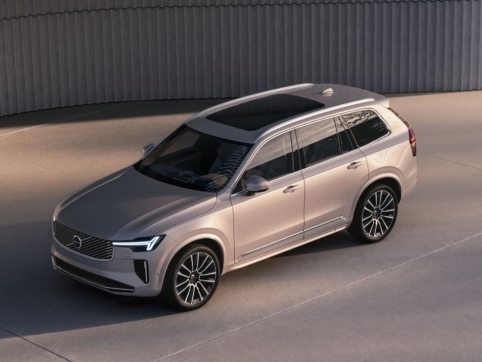
Volvo XC90 Facelift Launched in Malaysia with Exterior and Interior Changes
JohnApr 11, 2025
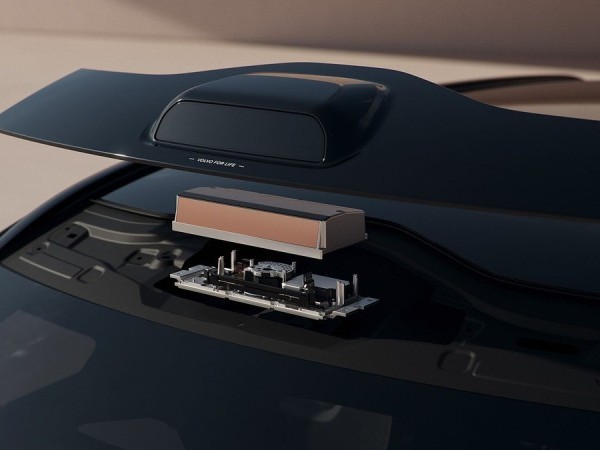
Warning: Vehicle LiDAR Can Damage Your Phone Camera!
AshleyMay 19, 2025

Well-Planned Space: The Exceptional Practicality of the Volvo XC60
Kevin WongMay 16, 2025
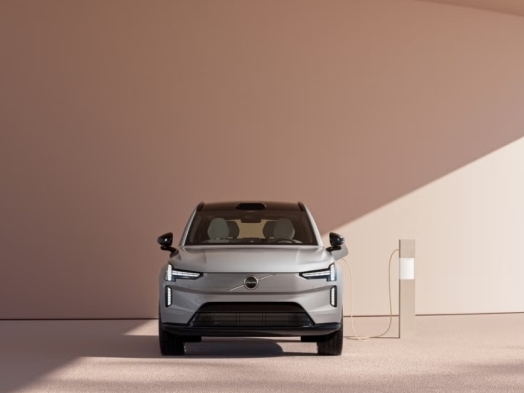
Volvo EX90 Electric SUV Now Available – RM 442,888
LienApr 11, 2025
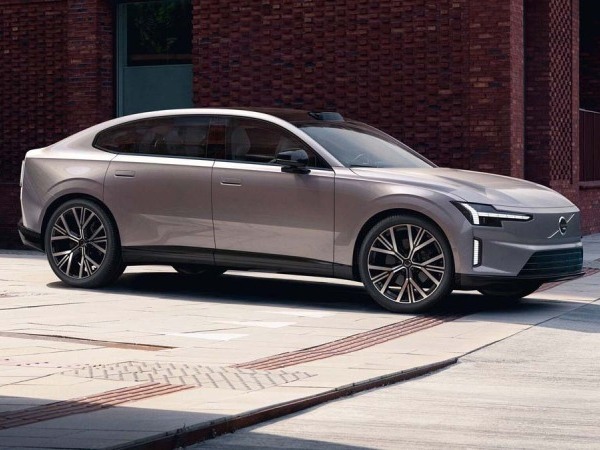
Volvo's first pure electric vehicle using 800V technology, the fastest and furthest electric vehicle in Volvo's history
RobertMar 7, 2025
View More











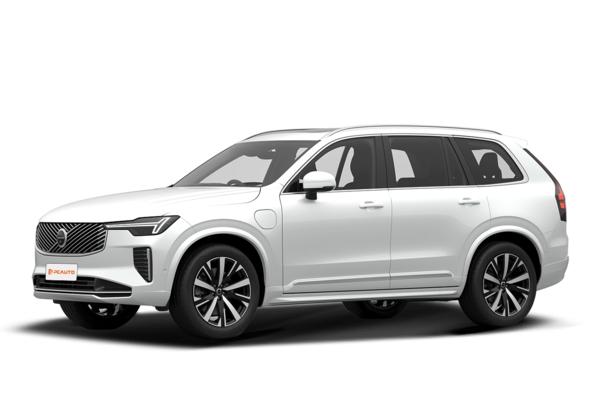





Pros
Cons